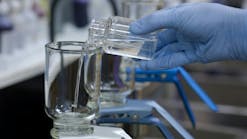HOUSTON, TX, Sept. 27, 2012 - One of the largest lagoon nitrification projects in the Unites States has been awarded to Headworks BIO™ Inc., totaling $3,690,000. The company will supply post-lagoon treatment for BOD polishing and nitrification through applying Moving Bed Biofilm Reactor (MBBR) technology.
Located in northern Arkansas along the White River, the city of Batesville has been blessed - and stressed - with residential and industrial growth. In order to keep up with growing demands, expansion of the Batesville WWTP was the city's only option.
The expansion requires that the plant increase flow capacity from 4.0 mgd to 9.0 mgd and decrease ammonia nitrogen levels to less than 8 mg/L at wastewater temperatures as low as 4.7°C. Batesville currently uses lagoons to treat influent that could manage the increase in flow, but were unable to meet the new discharge levels for ammonia nitrogen.
The city needed a wastewater treatment process that met the following criteria:
- Provide reliable nitrification during winter months
- Fit within existing property boundaries
- Simplify operation
- Minimize costs
A prominent local engineering firm was selected to develop a solution that would meet the challenges associated with the expansion. A MBBR process was recommended and Headworks BIO Inc. won the competitive bid process with the general contractor, BRB Contractors, Inc.
Two additional parallel treatment trains will be built, each containing two reactors. The first reactor will treat any remaining BOD along with the ammonia nitrogen from the lagoons and the second reactor will complete the nitrification process. Headworks BIO will employ its proprietary high-surface area ActiveCell® media to minimize the footprint of the entire system and clarification will be achieved through Dissolved Air Flotation.
"This application is well suited for the many benefits associated with MBBR," said Michele LaNoue, President and CEO of Headworks BIO, "and we are looking forward to applying our rich knowledge and expertise to ensure the project is a success for all parties involved."
MBBR is a fixed film wastewater treatment process that employs thousands of virgin polyethylene biofilm carriers to support the growth of biofilm. The carriers move freely in the reactor oxidizing ammonia nitrogen in the wastewater. Oxygen is delivered to the carriers through course bubble aeration, which also keeps the carriers mixed and in suspension. Media is retained in each reactor via stainless steel retention screens.


